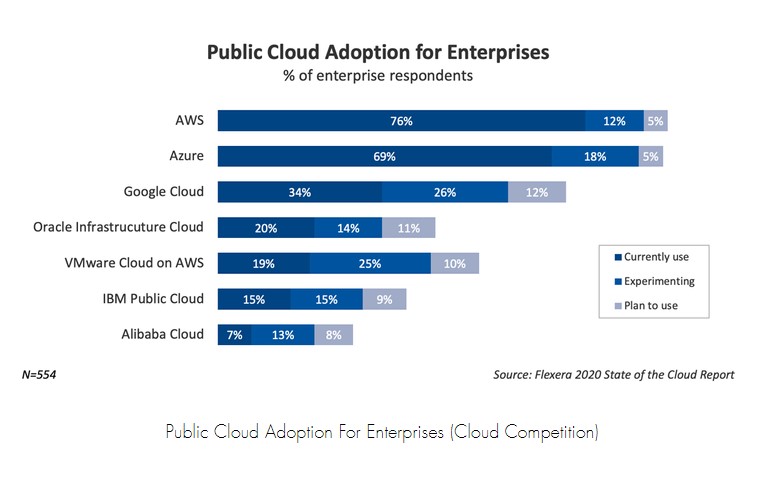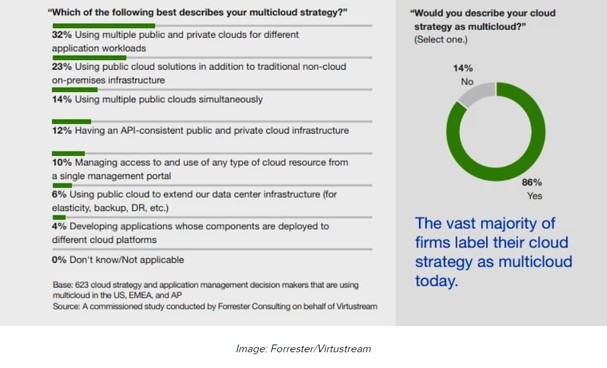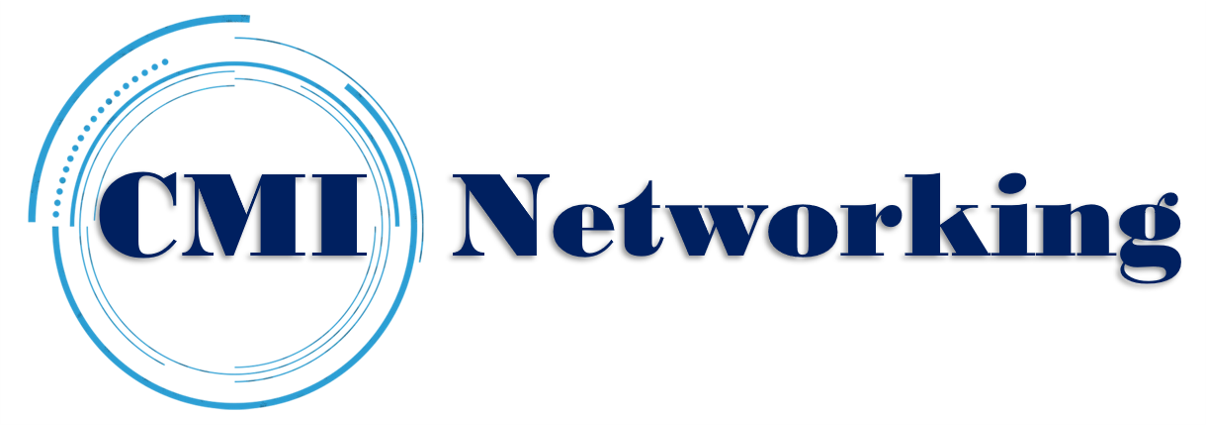Should you go for a Cloud, Hybrid Cloud or Multicloud? - The Growing Strength of Multicloud

There has been a relevant growth in multicloud usage from corporations; Cisco’s reflection on this supports this growth: ‘Cisco has predicted that by 2021, cloud data centres will process as much as 94% of all workloads’. Multi and Hybrid Cloud Environments will continue to grow; Gartner predicts that by 2021, 75% of midsize and large organizations will have adopted multi-cloud or a hybrid strategy. There have been many discussions around this topic, and we will discuss some of the advantages shortly.
One advantage of obtaining a multi-cloud structure is retaining compliance in an increasingly complex environment. This is due to the availability of SaaS solutions; these are software’s that are available via third-parties over the internet. The delivery method would normally comprise over the internet where the customer will usually log in to an online portal, accessing all the applications via their computer. Therefore, all services are taken care of via the Cloud making the process easy and quick. Most SaaS providers operate through a monthly subscription account fee, thus the budget and cost are straight-forward with no ‘hidden surprises add on costs’.
An interesting Case Study is the following: BigCommerce as an eCommerce platform ‘provides complete shopping cart software, as well as hosting infrastructure to the user, allowing businesses to create an online shop within minutes without worrying about coding, hosting, or software.’

Organizations will make it a Priority to Control Cloud Cost. According to Gartner, 60% of organizations will be using an external cloud provider managed services offering by 2022, this shows the doubling from 30% in 2018.
Solution-focused partners are important when opting for a cloud provider. The continuing advancement in technology suggests that this is just the beginning; there are many products that can derive from the cloud (check out our top cloud providers and their products article).
It is very often that many businesses in many different industries outsource the technology from third-parties which deal with AI, security, storage and so on. This is also because businesses have more revenue at their disposal to seek for these cloud solutions to beat industry challenges.
Cloud computing forecasts for 2020 show a further increase in cloud usage. Cloud initiatives will amount to 70% of all technology spending by 2020.
There are different deployments of the cloud depending on the industry and nature of business within a corporation. There are public, private and hybrid clouds, which one should you opt for?
Subscribe to our BlogSpot channel to get notified when we answer this question on our next article.
'Hybrid Cloud' has traditionally meant the combination of private (either on-premises or hosted in a colocation facility) and public cloud infrastructure, with orchestration tools used to deploy workloads and manage the balance between the two (employing public cloud resources for regular or episodic bursts of computing and/or storage requirements). The hybrid cloud proves to be very popular since among enterprises that use multiple clouds, the hybrid cloud model is adopted by nearly 60%, with multiple public and multiple private clouds much less popular (<20%). (2020 state of cloud report download)


Let’s explore why we would like to opt for a multi-cloud and how to become a corporation with multi-cloud functions:
1. Vendor lock-in: Many corporations, in order to prevent relying on only one service provider, prefer to outsource services from different vendors.
2. Shadow IT: Some corporations have different departments and due to lack of bridging between these departments – many different sectors of a company adopt different technologies. This is better since it avoids vendor lock-in problem and also each sector can adopt the technology that is best suited for their needs.
3. Multicloud adoption can also happen because of corporations efforts to minimise latency. Therefore, a UK corporation that has many customers in India might choose a vendor that has a data centre in India to higher the quality of their services.
4. Compliance can also play a significant role in mCloud adoption. EU’s GDPR for example will require customer data to be held in particular locations.
5. Resilience – it can be better for security, failover and disaster recovery. To have the companies information resources in different baskets rather than in one big basket would avoid a disastrous fall-over rate if it were to happen. It is a very smart preventative method.



